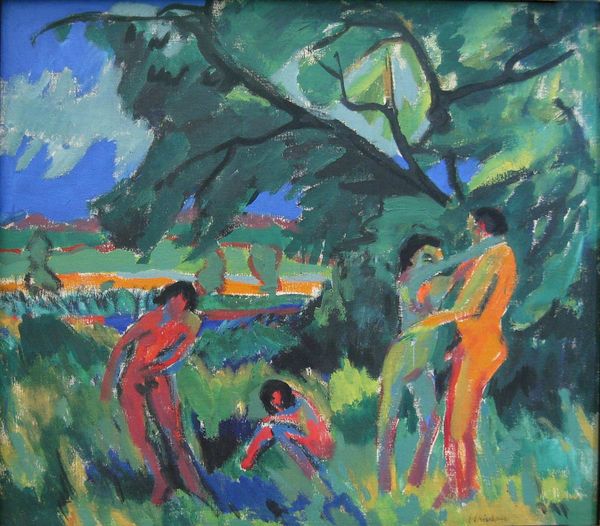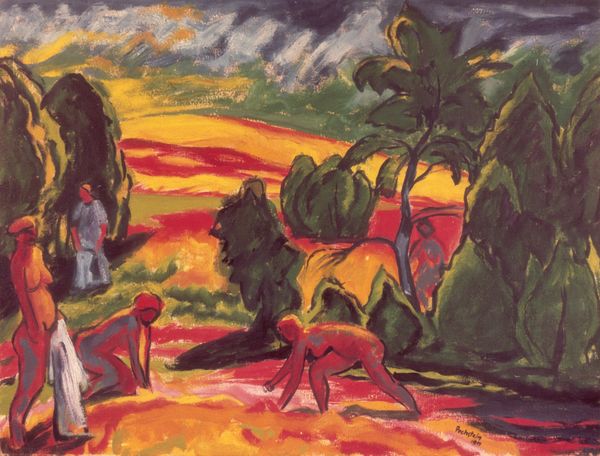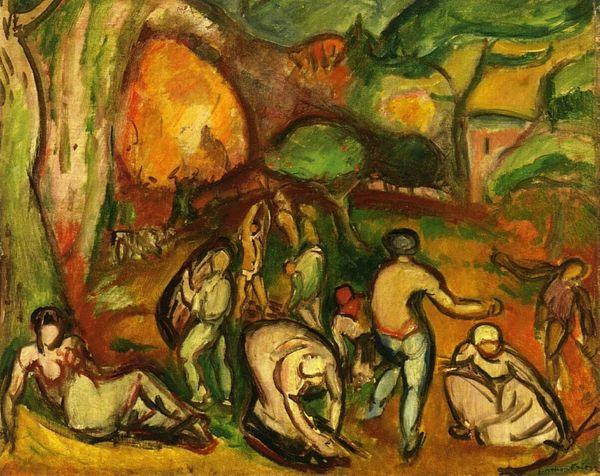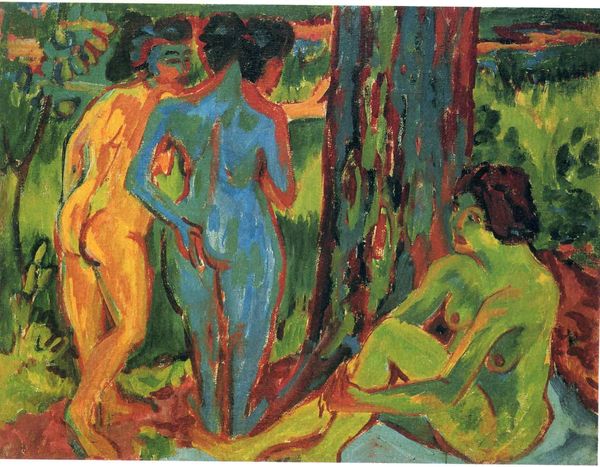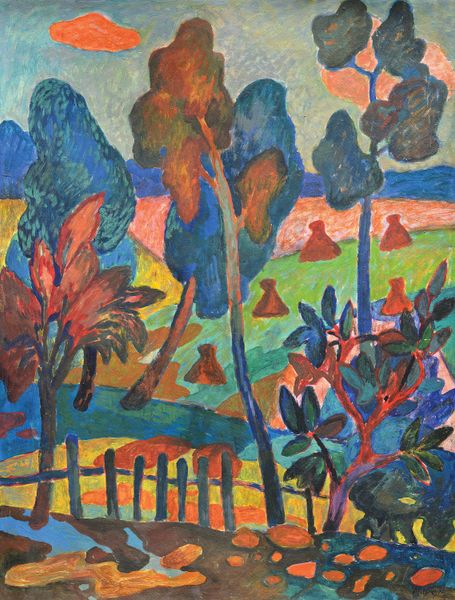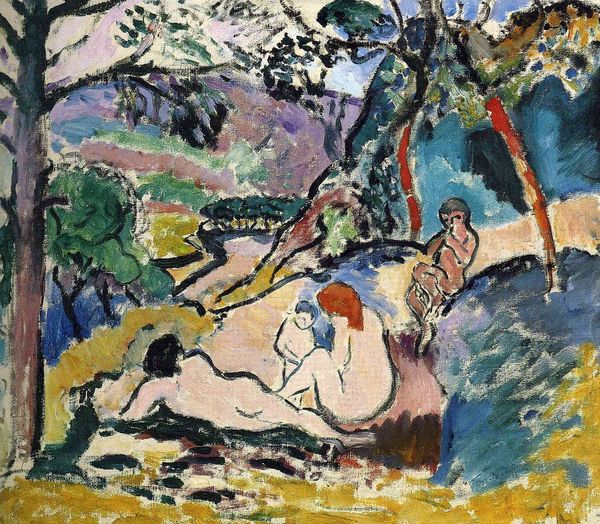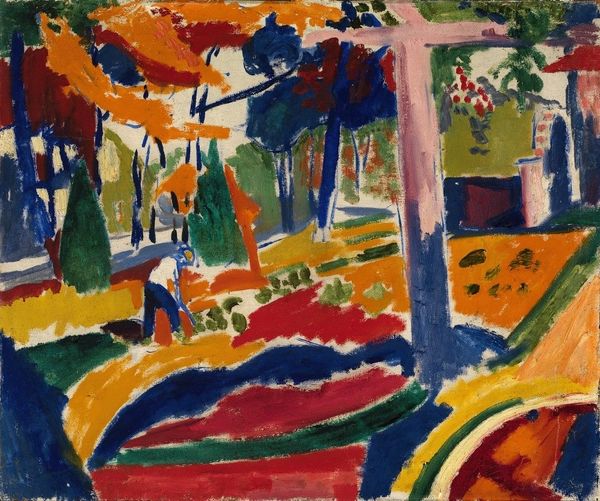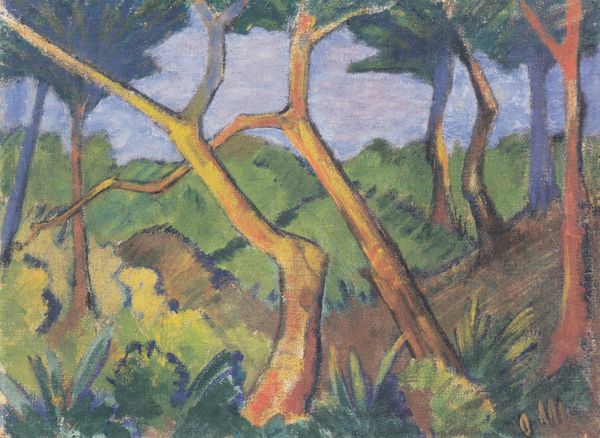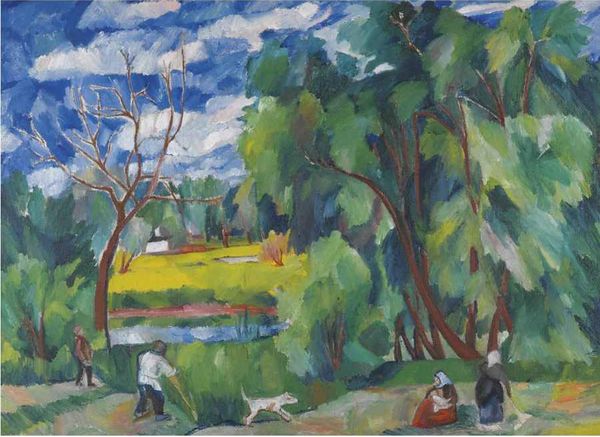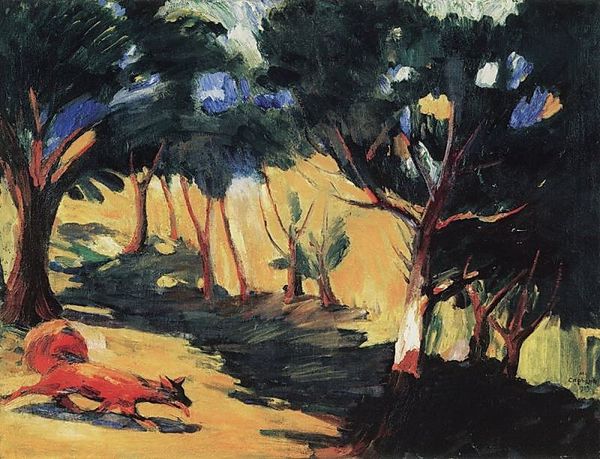
painting, oil-paint
#
fauvism
#
fauvism
#
painting
#
oil-paint
#
landscape
#
group-portraits
#
expressionism
#
nude
#
modernism
#
expressionist
Copyright: Public domain US
Curator: What strikes me immediately is the almost unsettling quality of light—such intense yellows and blues in sharp contrast. Editor: Agreed. This is Max Pechstein's "Bathers in Moritzburg," painted around 1910. Look at how Pechstein employs broad brushstrokes to apply the oil paint, almost like rough, unworked material. Curator: The composition—the grouping of figures, their poses—recall classical depictions of bathers. But this vibrant, almost aggressive palette injects something entirely modern, wouldn't you agree? The Expressionist angst seems to bleed through the seemingly idyllic subject matter. The very idea of bathing, a cleansing ritual, here becomes…charged. Editor: Absolutely. It challenges any simple reading of the scene. Notice how little modulation there is in the flesh tones? It seems almost primal. He’s pushing against academic tradition and bourgeois sensibilities. What about the material history – does it give insight into his move towards this more intense palette? Pigment sourcing for this palette, and how those color choices impact a contemporary audience… Curator: He had aligned himself with Die Brücke, and that association surely opened him up to this freer application of paint, this use of color as pure emotional force. The bather, historically a symbol of purity or sensual leisure, here seems to express a kind of raw, unfiltered vitality, verging on something almost Dionysian. A pre-war unease hangs there. Editor: A good point, these materials and methods reflect a broader social movement. But focusing on the individual hand obscures the web of interactions and dependencies crucial to the artwork’s creation and context, down to the brushes used. What can we learn about how these pigments impacted labor, availability, cost…? Curator: Perhaps. It’s precisely that emphasis on interiority that draws me. And the way it almost perverts those classic images, challenging the cultural memory. We think we know "bathing," but Pechstein reframes it for a new, rapidly changing century. Editor: I see what you mean; the cultural clash between history and the present creates tension in the materiality of this piece. Fascinating.
Comments
No comments
Be the first to comment and join the conversation on the ultimate creative platform.
